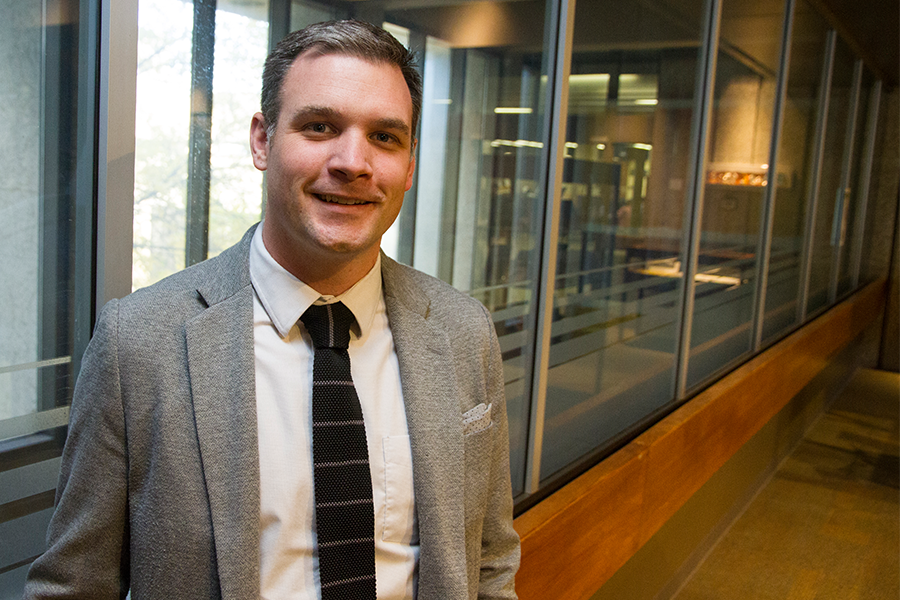
Service design and delivery progress
A lot has changed in the two years since the service design and delivery work began to realign and consolidate administrative functions across seven campus units—advancement, facilities management, financial services, human resources, information technology, research services and student services.
By Lesley PorterWhat has not changed in that time, said Wade Epp, director of service design and delivery, is the underlying goal.
"We're trying to enhance administrative services for the purpose of providing faculty with more time to be doing the research and teaching mission of the university, and not focus on doing administrative work," said Epp. "We know that faculty do important administrative things, like make decisions and support collegial activities, but it's the other work that they don't need to be doing."
Epp pointed to a couple pertinent examples of this, including recruitment. "A researcher might say they need a Canadian citizen with an undergraduate degree. You might get 300 applications, but only 15 per cent of those meet the minimum standard." Rather than having an individual researcher scroll through those 300 applications, Epp proposes a front-end system to vet those applications before they make it to the researcher. "That's where we see that benefit. We can do that work instead of a faculty member having to do it."
Another process in a similar vein that could use refining, he continued, is electronic job submission and employee onboarding—that is, not only filling a vacant position, but making sure the new employee has the appropriate tools and resources to succeed in their job from the get-go.
The current process, he explained, is very sequential so that when a person starts their first day of work, the process has not caught up with them, which is problematic. "So they show up, day one, and they don't have access to their computer. They don't have access to parking or the PAC or benefits. They may or may not be on payroll or make it for the cut-off for the payroll cycle."
He added that it is important to understand, from a customer service perspective, the potential negative impact that may have on a new applicant or staff member at the university. By running those processes in parallel, he said, the university can look across those functional areas. "That's the big takeaway."
As the ongoing work is ultimately for their benefit, Epp has met extensively with faculty groups across campus. And while there remains some anxiety about loss of staff, he contends that any changes involve the workflow itself—not people—and "will only enhance the effectiveness of the people within the department.
"We aren't looking to move people out of departments," he said. Rather, "we're looking for inefficiencies in current services and determining how we can improve those services, so faculty aren't spending more time on them than necessary."
Among those providing input is Keith Willoughby, a faculty member with the Edwards School of Business. Though not part of the formal team, Willoughby—whose research interests include efficiency and operations management—understands the importance of efficient service.

Keith Willoughby
"If you look within any real-world process—be it buying an airline ticket, booking a hotel, organizing a conference, or getting a taxi—there are a lot of different activities involved in that process," he said. Unfortunately, not all of them add value—so it is crucial to "take a hard look at a real process, identify all its activities, and see what you can do to, in essence, improve the delivery of value by eliminating those stumbling blocks."
Currently, three administrative functions on campus—financial services, human resources and research services—are immersed in work that looks at ways to increase efficiencies within their respective departments and units.
While Epp is pleased with the implementation in the three functional areas thus far, he is exercising caution before rolling it out to include the other four areas.
"We really want to take stock and learn from that experience before we start adding on more services," he said, adding that facilities management may be next on the list for implementation. "We want to make sure we get those impactful services before we start going too big."
In terms of signs of success, he hopes to, in the coming months, produce some operational metrics that provide a baseline for the administrative services.
"This work creates capacity. We want to offer more opportunity for the important academic work our faculty are here to do."

